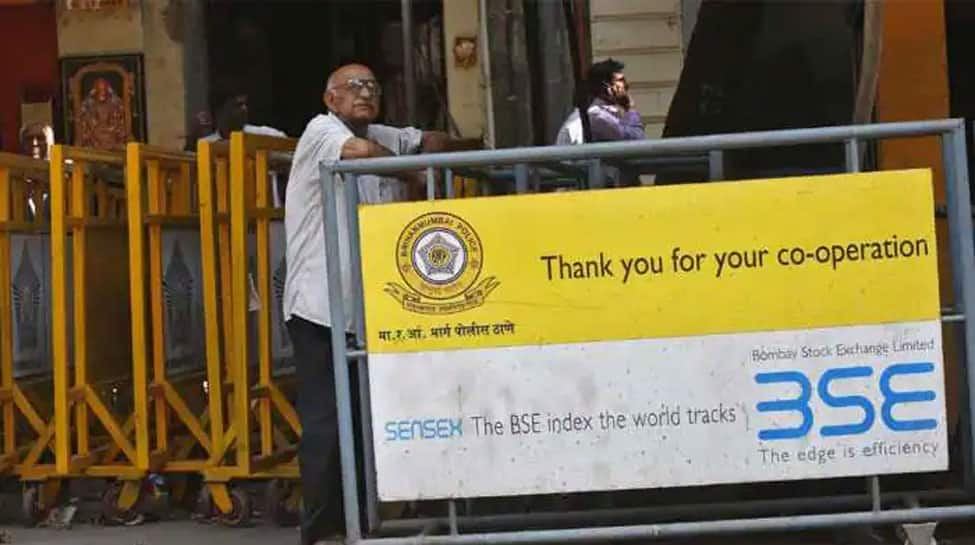Business
Kotak Mahindra stock split: Bank announces 1:5 share split; aims to boost liquidity- what you need to know – The Times of India

Kotak Mahindra Bank on Friday said its board has approved a sub-division of equity shares in a 1:5 ratio to make the stock more affordable and enhance market liquidity. The decision was taken on the lender’s 40th foundation day and is subject to statutory and regulatory approvals, the private sector bank said in a regulatory filing.Under the proposal, one existing equity share of face value Rs 5 will be split into five shares of face value Rs 1 each, fully paid-up. The lender last conducted a stock split in 2010, when it subdivided shares in a 1:2 ratio, PTI reported.Commenting on the decision, the bank’s part-time chairman CS Rajan said, “As we celebrate 40 years of our journey, we reaffirm our commitment to creating long-term value for our shareholders. This milestone is not just a reflection of our legacy, but a Kotak for the future.”He added that the move is intended to encourage broader investor participation by making equity shares “more affordable and liquid”.Managing Director and CEO Ashok Vaswani said, “Forty years ago, we began a journey rooted in trust and innovation. Today, as we celebrate this remarkable milestone, we also look ahead with a renewed ambition. The decision to implement a stock split echoes our commitment to inclusivity, so that more investors can join us in the Kotak growth story.”The board also approved amendments to the capital clause of the Memorandum of Association to reflect the revised share structure post-split. The change will take effect after necessary approvals from shareholders, the Reserve Bank of India, and other regulatory authorities.The process is expected to be completed within two months of receiving all clearances. Shares of Kotak Mahindra Bank closed 0.51% lower at Rs 2,086.50 apiece on the BSE on Friday.
Business
Labour codes to usher in uniformity, clarity – The Times of India

In a landmark move set to reshape India’s labour landscape, govt notified the implementation of all four labour codes, bringing into effect one of the most ambitious labour reforms in the country’s post-independence history. The rollout marks the realisation of “One India, One Law”- a unified labour framework that replaces a century of fragmented statutes with a consolidated, modern regulatory system. The four legislations cover various aspects of wages, social security, occupational safety, health and working conditions and employee relations aspects.Together, these codes subsume 29 central labour laws into a single legal structure aimed at improving transparency, reducing compliance complexity and enabling uniformity across states. Under the earlier system, overlapping definitions, varying state amendments and multiple registrations created operational hurdles for both employers and workers. The new framework introduces standardised definitions, rationalised thresholds and digitised processes intended to streamline compliance across the country.While the codes are now in force nationwide, supporting rules under both central and state jurisdictions are still to be notified. The press release issued by govt clarifies that they would engage with the public and stakeholders in the development of rules, regulations, and schemes under the new codes. Additionally, to ease the transition, the release confirms that the relevant provisions of existing labour laws will remain in force during the transition period.Changes for industryThe implementation of the labour codes will fundamentally reshape workforce management across industries. By introducing a uniform definition of wages, organisations will face greater clarity in benefit calculations for gratuity, ESI, leave encashment, overtime and statutory bonus, reducing litigation risk but potentially increasing employment costs. This change demands a thorough review of salary structures and payroll systems to ensure compliance. Additionally, the broader definition of ‘worker’ will extend entitlements such as overtime, leave encashment, and retrenchment compensation to a wider employee base, requiring companies to reassess classifications and related policies.Changes for workersFor workers-particularly those in the unorganised, gig and platform sectors-the reforms mark an unprecedented expansion of protections. The code on wages ensures a statutory minimum wage for all categories of workers and prohibits gender-based wage discrimination. The Social Security Code extends benefits to gig workers, platform workers and fixed-term employees for the first time. A national database of unorganised workers and a dedicated Social Security Fund aim to enable targeted delivery of welfare benefits. The OSH Code enhances workplace safety norms, regulates working conditions and ensures portability of benefits for migrant workers.A new chapter for India’s labour ecosystemThe enforcement of the labour codes marks a pivotal moment in India’s economic reform journey. If implemented effectively, the unified framework promises greater transparency, stronger worker protections and a more predictable regulatory environment for businesses. While final state rules and clarifications are awaited, Friday’s notification marks the beginning of a new chapter – one where India’s labour laws, finally, speak in a single, coherent voice.(The writer is partner, people advisory services – tax, EY India)
Business
Cambridge shelter resident says Budget must focus on housing

A man experiencing homelessness said he hoped the government would focus on increasing accessibility to housing in its upcoming Budget.
Josh, 26, who is currently a resident at the night shelter Jimmy’s in Cambridge, said the availability of council housing and “move-on housing” – shared accommodation where people can receive support – was important.
Chancellor Rachel Reeves will deliver Labour’s second budget on 26 November.
Cambridge City Council received 1,139 homelessness applications between April 2024 and March 2025, which was a 13% rise on the previous year.
Josh said his focus was to get back into work after he completed his electrician qualifications, which he said were “just as hard as a degree in my opinion”.
He would like to see the Budget include more opportunities for continuing apprenticeships and more financial support for necessities such as course books.
Josh said he recently received a government grant to pay for essential job hunting equipment, such as a mobile phone, boots and suitable clothing.
He added that he would support a rise in taxes if they were spent on investing in public services, “especially the train lines into London”.
Andrew works in the security sector and lives in Peterborough in a home owned by the charity Hope Into Action.
The charity, which was set up in the city 15 years ago, owns 130 houses across the UK.
Andrew has beea living in one of the charity’s properties for two years, after experiencing homelessness for about “three or four months”.
“The charity saved my life,” he said.
He said renting in the private sector “can be expensive” but that people themselves have “got to budget as much as possible”.
Applications for housing to Peterborough City Council are also rising.
In 2024, it was contacted by 3,654 households facing homelessness, which was an 11% jump on the previous year.
And since 7 April this year, there have already been 2,333 approaches – an average of 70 a week.
The authority received nearly £1m last month to help tackle rough sleeping in the city.
Andrew said he recognised that public services needed to be paid for and that if tax rises needed to happen to pay for them then “you’ve got to make good” yourself.
HM Treasury was contacted for comment.
Business
Eli Lilly hits $1 trillion market value, a first for a health-care company

A sign with the company logo sits outside of the headquarters of Eli Lilly in Indianapolis, Indiana, on March 17, 2024.
Scott Olson | Getty Images
Eli Lilly reached a $1 trillion market capitalization on Friday, the first health-care company in the world to join the exclusive club dominated by tech firms.
Eli Lilly briefly hit the $1 trillion mark in morning trading before retreating. It was last trading around $1,048 a share. Eli Lilly is the second nontechnology company to reach the coveted $1 trillion mark in the U.S. after Warren Buffett‘s Berkshire Hathaway.
The drugmaker’s stock has climbed more than 36% this year as investors applaud the gains it has made over chief rival Novo Nordisk in the GLP-1 drug space. The Indianapolis-based company’s stock has been riding the skyrocketing popularity of its weight loss injection Zepbound and diabetes treatment Mounjaro.
Eli Lilly’s stock has soared on the back of the success of its drugs Mounjaro and Zepbound.Demand is only expected to grow as approvals for the treatments’ uses and insurance coverage expand.
The two drugs have driven eye-popping sales growth for Eli Lilly. Last month, the company said Mounjaro drew in $6.52 billion in revenue in the third quarter, a 109% increase from the previous year. Meanwhile, Zepbound posted $3.59 billion in sales during the period, a 184% spike from the prior-year period.
Demand for the treatments will only grow as approvals for their use and insurance coverage expand. In addition, Eli Lilly expects an oral version of its popular drugs to hit the market next year, which could give patients a more convenient option than a shot that is easier for the company to produce.
Eli Lilly will likely remain a dominant player in the weight loss drug market, which some analysts believe could be worth more than $150 billion by the early 2030s.
But despite its recent struggles and leadership shake-ups, Novo Nordisk remains a formidable rival for Eli Lilly in the space. Pfizer also made a push forward in the market, as well, when it won a $10 billion bidding war with Novo Nordisk for obesity drugmaker Metsera earlier this month.
The runaway success of Zepbound, Mounjaro
Eli Lilly, a pharmaceutical chemist and Union veteran of the U.S. Civil War, founded his namesake company in 1876. It has long been at the forefront of the diabetes treatment space, introducing the world’s first commercial insulin in 1923.
Eli Lilly became a publicly traded company on the New York Stock Exchange by 1952, and for decades relied on a slate of widely successful products to drive much of its profits and revenue. That included insulins, the antidepressant pill Prozac and the earliest polio vaccine.
An Eli Lilly & Co. Zepbound injection pen, March 28, 2024.
Bloomberg | Bloomberg | Getty Images
Eli Lilly hit the jackpot with the May 2022 approval of tirzepatide for diabetes, which is sold as Mounjaro. It started to compete with Novo Nordisk’s diabetes injection Ozempic, which had entered the market a few years earlier.
But Eli Lilly brought a new way to treat diabetes and eventually, obesity. Tirzepatide works by imitating two hormones produced in the gut called GLP-1 and GIP. GLP-1 helps reduce food intake and appetite. GIP, which also suppresses appetite, may also improve how the body breaks down sugar and fat.
Meanwhile, Novo Nordisk’s semaglutide, the active ingredient in Ozempic and its weight loss drug Wegovy, only targets GLP-1.
Mounjaro achieved “blockbuster” status — meaning it generated more than $1 billion in annual sales — during its first full year on the market. Eli Lilly then won approval in late 2023 for tirzepatide as a treatment for obesity, which is sold as Zepbound and now competes with Novo Nordisk’s Wegovy.
By 2024, Mounjaro pulled in $11.54 billion in sales, while Zepbound posted $4.93 billion in revenue.
-

 Tech6 days ago
Tech6 days agoNew carbon capture method uses water and pressure to remove CO₂ from emissions at half current costs
-

 Politics1 week ago
Politics1 week agoBritish-Pakistani honoured for transforming UK halal meat industry
-

 Business7 days ago
Business7 days agoThese 9 Common Money Mistakes Are Eating Your Income
-

 Sports6 days ago
Sports6 days agoTexas A&M officer scolds South Carolina wide receiver after touchdown; department speaks out
-

 Business1 week ago
Business1 week agoWhat’s behind Rachel Reeves’s hokey cokey on income tax rises?
-

 Fashion1 week ago
Fashion1 week agoAfter London, Leeds and Newcastle, next stop Glasgow for busy Omnes
-

 Tech1 week ago
Tech1 week ago$25 Off Exclusive Blue Apron Coupon for November 2025
-

 Sports1 week ago
Sports1 week agoApple scrapping MLS Season Pass service in ’26











